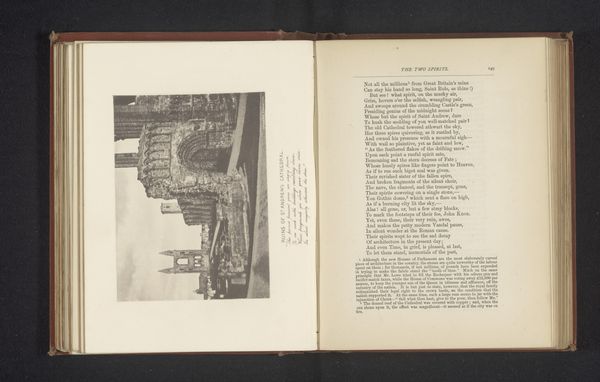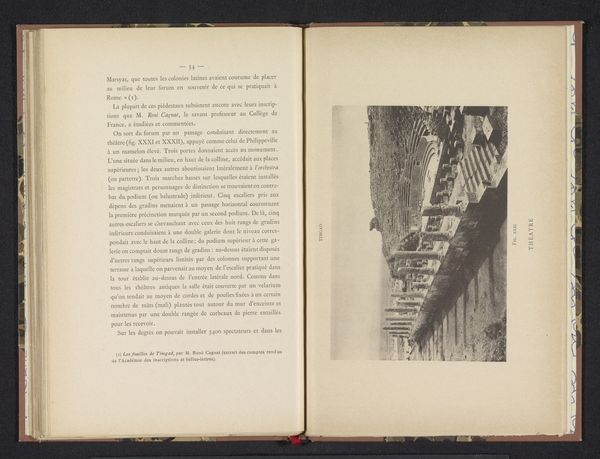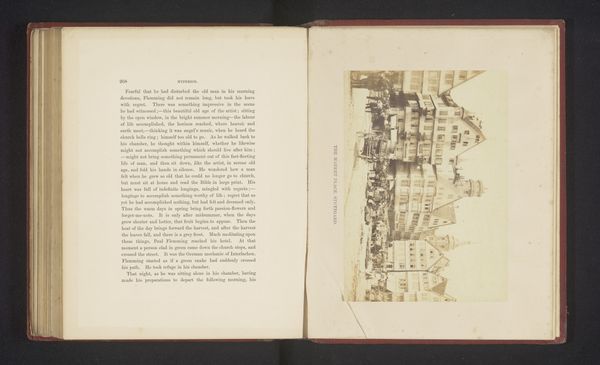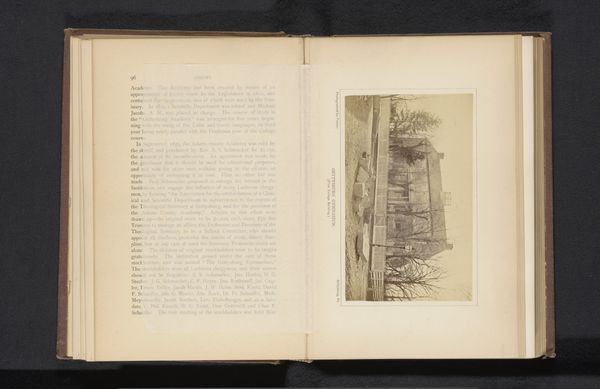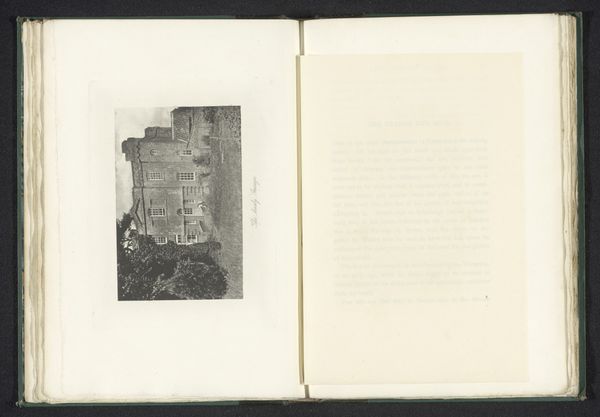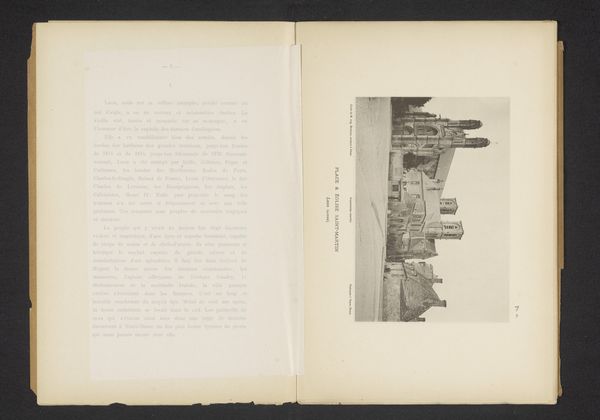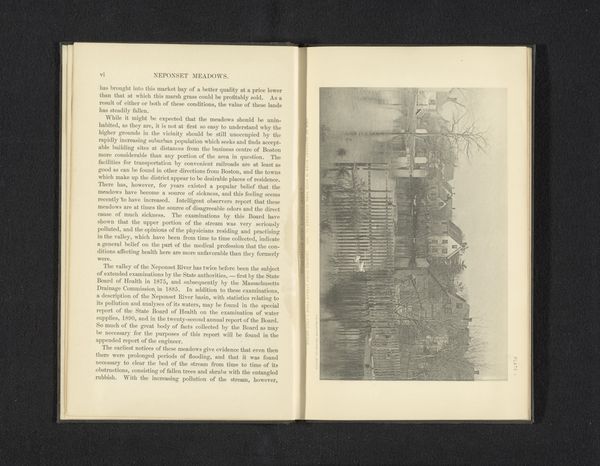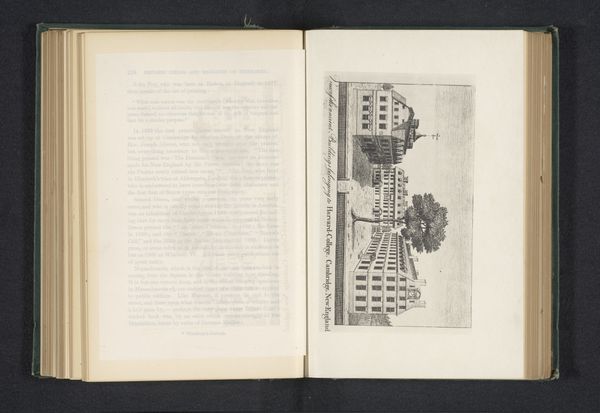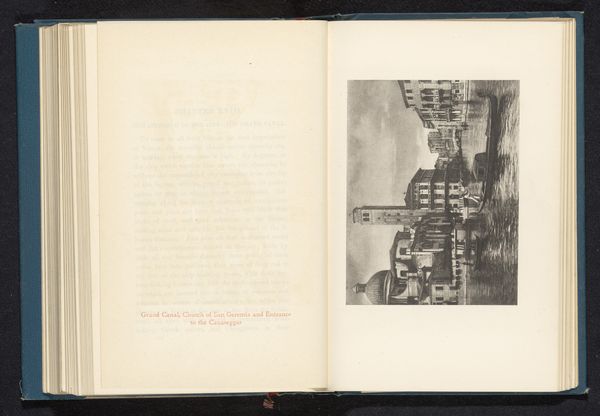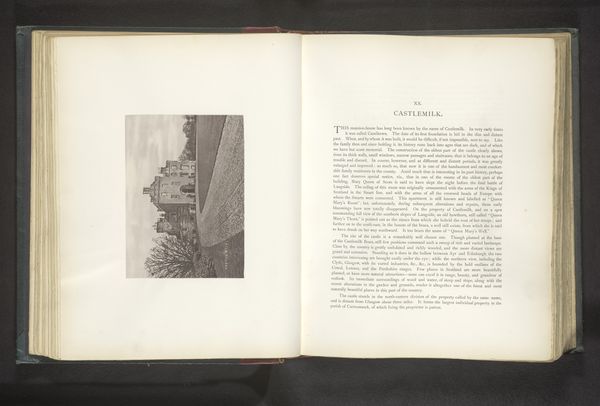
Verzameling van beelden van Rutherglen of uit de omgeving van de clyde before 1892
0:00
0:00
graphic-art, mixed-media, collage, print, etching, textile, paper, photography
#
portrait
#
graphic-art
#
aged paper
#
mixed-media
#
homemade paper
#
collage
#
paperlike
# print
#
etching
#
book
#
appropriation
#
sketch book
#
hand drawn type
#
textile
#
paper
#
photography
#
personal sketchbook
#
hand-drawn typeface
#
thick font
#
cityscape
#
handwritten font
#
modernism
#
historical font
Dimensions: height 106 mm, width 151 mm
Copyright: Rijks Museum: Open Domain
Editor: This is "Verzameling van beelden van Rutherglen of uit de omgeving van de clyde," which translates to "Collection of images from Rutherglen or from the environment of the clyde". It's dated before 1892 and attributed to W. Ross Schearer, utilizing collage and other mixed media, appearing within a book. The juxtaposition of text and image creates a fascinating, almost scrapbook-like effect. What’s the story being told through this assemblage? Curator: I see here a deliberate commentary on the industrial and social landscape of late 19th-century Scotland, through appropriation. Look at the contrasting elements. On the left, we have poetry seemingly romanticizing place and nature. On the right, carefully arranged, yet almost haphazard, collaged images portray urban development and perhaps, its effects on society. Editor: Do you think the artist is romanticizing, or critiquing industrial society? Curator: That’s the compelling question, isn't it? Is it nostalgia for a pre-industrial past, a lament for what's lost? Or perhaps it is commentary on the social disruptions caused by rapid urbanisation? Schearer may be critiquing how cultural institutions, in his time poetry or photography, mediated people's experiences with urban life. Consider also, what voices are excluded, whose stories are left untold? Editor: So the selection and arrangement are vital parts of understanding the artist's point of view. The tension between the written romantic verses and photographic realism create a compelling juxtaposition. Curator: Exactly. The "homemade paper" and "hand-drawn typeface" give insight into local identity of Schearer's culture. It makes you think about who has the power to record history and whose perspectives dominate in historical narratives, right? Editor: Yes, absolutely. I hadn’t considered the power dynamics at play in the selection of these images and text. Curator: And think about who has access to public memory today. The conversation about art in social context makes the work really powerful. Editor: That’s given me a lot to think about regarding whose stories get told and how. Thank you.
Comments
No comments
Be the first to comment and join the conversation on the ultimate creative platform.
